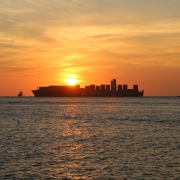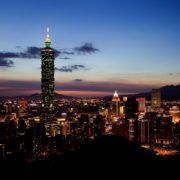What was the Corfu Channel incident?
The Corfu Channel case [1947-1949] was the first-ever case that the newly-formed International Court of Justice (ICJ) presided over. It was a contentious case that involved a series of encounters between the United Kingdom (UK) and the People’s Republic of Albania. The case was based on the premise that Albanian vessels and mines caused significant damage to British ships and human casualties. Following the ruling passed by the ICJ, the Albanian government had to compensate the UK. Although the accused initially refused to comply, reparations were eventually paid to UK in 1996.
Topic of Study [For H2 History Students]:
Paper 1: Safeguarding International Peace and Security
Section B: Essay Writing
Theme III Chapter 2: Political Effectiveness of the UN in maintaining international peace and security – International Court of Justice: ensuring adherence to international law; arbitration and advisory opinion
In the following section, we will examine the background of the incident, the role of ICJ and the final outcome of the case. By doing so, knowledge of this case study will be useful for students when they answer United Nations essay questions that discuss the relevance and effectiveness of the ICJ.
1. [Albania & UK] Three naval encounters: Trouble brewing in the seas
The incident took place in a time when the Cold War-related Greek Civil War (1946-1949) began.
The first incident involved the two British cruisers – HMS Orion and HMS Superb – that were fired upon by Albanian shore batteries on 15 May 1946, while passing through the northern part of the Corfu Channel. In response, the UK lodged a formal protest, demanding an apology from the Albanian government. However, the latter responded with the claim that the two British cruisers had entered Albanian territory, thus justifying their retaliation.
The second incident took place on 22 October 1946, in which a fleet of Royal Navy cruisers and destroyers (UK) entered the Corfu Channel. Then, two British destroyers – HMS Saumarez and HMS Volage were heavily damaged by naval mines. As a result, about 44 were killed and 42 were injured. Later, Albania claimed that the mines were laid by Greece, thus denying responsibility for the accident.
The third incident happened on two consecutive days: 12-13 November 1946. Following the tragic incident, the Royal Navy conducted a mine clearing operation (‘Operation Retail’) in the Corfu Channel. The Albanian government protested against this operation as it was carried out without their approval, given that it was done within Albanian territory.
2. [ICJ] The Proceedings: A score to settle
On 22 May 1947, UK brought the case to the ICJ, requesting Albania to pay reparations. After a substantial period of deliberation for nearly two years, the ICJ concluded that the UK did not violate Albanian territorial waters as the Corfu Channel was meant for international navigation. More importantly, Albania bore the responsibility to warn other states of the naval mines that were present. Hence, the ICJ ordered Albania to pay UK£843,947 as compensation to the UK.
However, ICJ’s ruling was met with non-compliance from Albania, reflecting the absence of enforcement powers to ensure strict adherence to the international law. During the Cold War era, Albania received strong political backing from the Soviet Union, given the former’s ideological inclination towards Marxism-Leninism.
3. Outcome: Significance of the Corfu Channel case
Nevertheless, the dissolution of Soviet Union in 1991 also led to the end of socialism in Albania. On 8 May 1992, both the UK and Albania arrived at a common consensus to end the case. Albania agreed to pay US$2 million to the UK, while the UK returned 1,574 kg of gold to Albania (which was looted by the Nazi Germany during WWII).
From then on, the Corfu Channel case had set the precedence for other contentious cases that the ICJ managed, particularly in matters pertaining to the naval international law. One notable implication was the provision of an international law pertaining to sea navigation. The case influenced the International Law Commission (ILC) to draft the United Nations Conference on the Law of the Sea (UNCLOS I) in 1958. Another significant legacy of the case was its impact on the questionable legality of force, which resurfaced during the Nicaragua v. United States (1986).
What can we learn from this case study?
Use the following questions to assess your understanding of this case:
– What were the factors that determined the political effectiveness of the ICJ in dealing with the Corfu Channel case?
– Was compliance of member states the most important factor?
The H2 and H1 History Tuition feature online discussion and writing practices to enhance your knowledge application skills. Get useful study notes and clarify your doubts on the subject with the tutor. You can also follow our Telegram Channel to get useful updates.
We have other JC tuition classes, such as JC Math Tuition and JC Chemistry Tuition. For Secondary Tuition, we provide Secondary English Tuition, Secondary Math tuition, Secondary Chemistry Tuition, Social Studies Tuition, Geography, History Tuition and Secondary Economics Tuition. For Primary Tuition, we have Primary English, Math and Science Tuition. Call 9658 5789 to find out more.



